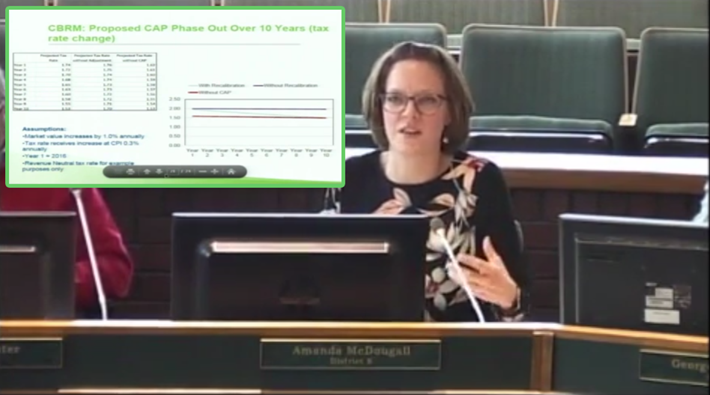On March 29th, the people who decide the tax assessed value of our homes and businesses presented to the CBRM council. Property Valuation Services Corp (PVSC) gave an update on changes in assessment value and the value of new construction. However, they also discussed how our tax cap is likely to be removed. They showed a chart that indicated that average tax rates would decline over a phased out 10-year period.
Most will agree there are serious flaws in the tax cap system and that these flaws lead to a wider disparity in unfair taxation rates over time. Likewise, the deviation in rates between capped and uncapped homes and businesses of similar market value can be a deterrent to sales and new construction.
I am in agreement. However, I also offer a cautionary note.
Our government officials may not fully understand the economic implications of various methods of removing the cap. And they are the ones who will oversee its removal. This puts us at risk.
A solution that involves a phase out period is the only apparent way to avoid a market whiplash effect. After all, we're dealing with billions of dollars in property, and a fragile economy where tax rates are very much a known factor that works against us.
Councillor Amanda McDougall started her questioning with the most important question of all.
Since the PVSC representatives noted that New Brunswick phased out its cap system in 2012, what was the process?
Had Councillor McDougall been given an answer, you can anticipate what her next question would have been. Specifically:
What was the result of that tax cap removal or phase out?
However, Lloyd McLeod, Senior Commercial Manager for PVSC, gave a response I found quite surprising:
"Ah, I'm not really sure what they did. I couldn't comment on that, but, it's certainly something I could find out for you"
"I'm not sure if they did it in one swoop, or if they did a phase out to be quite true. I don't know what they did"
McDougall correctly realized that New Brunswick creates an opportunity to see what happened in another Atlantic province with removal of the tax cap using a selected method.
It can also provide us with several years of data to evaluate of the actual impact on various factors once the removal was underway. This data is essential in allowing us to create a strategic plan, to assess our risks, and to develop greater certainty about what we should expect to happen, both positive and negative effects.
If PVSC are presenting an overview of a phased out plan and they don't know exactly what method New Brunswick used, and what the result was, then we have a serious problem.
Are there other key stakeholders that we can expect to be better informed?
There is much more to a tax cap phase out than a simple flat line, revenue neutral chart.
As soon as this decision is announced, it sends a market signal. The signal alone, even before the first change is implemented, can begin to have a market effect.
The New Brunswick data could give us much better real world insight into what the consequences of implementing such a change may be.
As of March 2017, it would appear that the leading experts in tax assessment and the tax cap program do not know:
(a) which method New Brunswick used to remove the cap, or
(b) what the effect has been thus far.
Nonetheless, they appeared before the CBRM council, advising in an expert capacity as to the anticipated changes in the 10-year tax rates.
When I consider that there are many elected officials even less capable of understanding the complexity of the economics and effects of changes to the system, it gives me even greater cause for concern.
I'm very appreciative that Councillor McDougall so quickly pinpointed the need for examining the New Brunswick case study. I certainly hope that we don't make any moves regarding the tax cap until the leading experts and stakeholders in the field have done their basic homework.
NOTE: The views expressed above are my own and do not represent lokol (goCapeBreton.com). Read more






5
Log In or Sign Up to add a comment.- 1
arrow-eseek-e1 - 3 of 3 itemsFacebook Comments